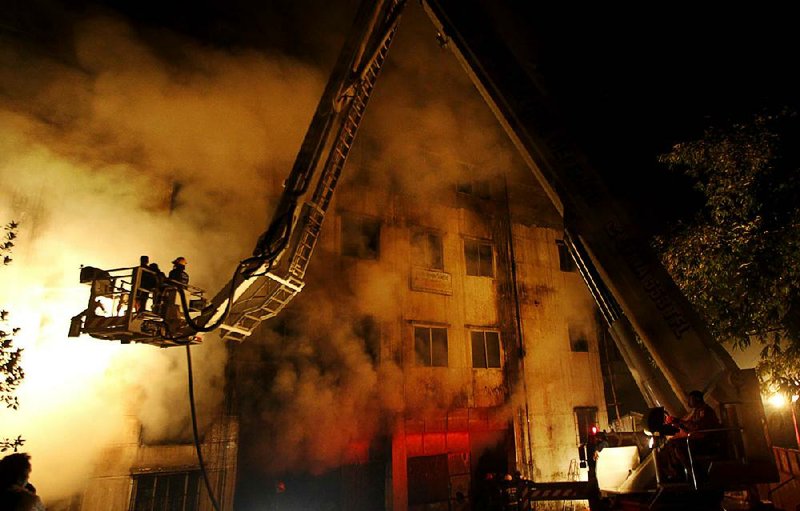DHAKA, Bangladesh — A Bangladesh government committee investigating the garment factory fire that killed 112 people last month said in its findings released Monday that the blaze was sabotage, probably by someone who worked there.
But the panel said that no matter who set the fire, the owner of the factory should be punished for the deaths because he neglected worker safety.
“If someone is responsible for such a huge number of deaths, that’s him. He has failed to ensure safety,” committee head Mainuddin Khandaker said of factory owner Delwar Hossain. Khandaker also described Hossain’s role in conditions at the time of the fire as “unpardonable negligence.”
Some government and garment industry officials had alleged soon after the Nov. 24 fire that it was an act of sabotage. A fire official said at the time that the number of casualties would have been greatly reduced if the factory had followed safety rules.
The factory lacked emergency exits and Hossain has said only three floors of the eight-story building were legally built. Surviving employees said gates had been locked and managers had told them to go back to work after the fire alarm went off.
The four-member committee submitted its 214-page report to the government’s Home Ministry Monday. At least two other investigations are ongoing.
The Tazreen Fashions Ltd. factory made clothing for several major U.S. retailers, including Wal-Mart and Sears, which had received a2011 audit warning about the factory’s conditions. Wal-Mart and other companies said suppliers had used the Tazreen factory without their knowledge.
Retailers, fashion labels, labor groups and local officials meeting in 2011 in Dhaka, the capital, had discussed an agreement to improve fire safety at Bangladesh’s roughly 4,000 garment factories. The proposal went nowhere after a Wal-Mart representative said it was “not financially feasible,” according to meeting minutes and witnesses.
Workers at Tazreen Fashions had staged small demonstrations in the months before the fire, demanding back wages they were owed.
On the night of the fire, more than 1,150 workers were inside the eight-story building, working overtime shifts to fill orders for various international brands, The New York Times reported. Fire officials say the fire broke out in the open-air ground floor where large mounds of fabric and yarn were illegally stored; Bangladeshi law requires that such flammable materials be stored in an enclosed room with fireproof walls.
Khandaker, an official with the Ministry of Home Affairs, said that committee members think some people who worked at the factory were involved in the sabotage. The New York Times reported that Hossain and nine of his midlevel managers and supervisors prevented employees from leaving their sewing machines even after a fire alarm sounded.
“Otherwise, how come they locked the gates? How come they asked the workers to go back to work even after the fire alarm?” he said.
Three factory officials suspected of locking workers inside the building were arrested days after the fire and remain in custody.
No matter who is responsible for setting the fire, Khandaker said, “We can’t spare the owner of the factory. He is responsible for his failure to ensure safety. I have recommended specifically to bring the owner under the purview of law.”
Hossain “tried to defend himself” under questioning from the committee, Khandaker said. “But I can tell you clearly that he had serious negligence as he has failed to follow existing building code and safety rules.”
A phone call seeking comment from Hossain was not answered Monday night.
Bangladesh has more than 4,500 garment factories, which employ more than 4 million workers, many of them young women, according to The New York Times. The industry is crucial to the national economy as a source of employment and foreign currency.
The committee recommended that the government form a “powerful task force” to ensure safety at garment factories across the country. The garment industry accounts for about 80 percent of Bangladesh’s exports, and workers’ rights groups say existing regulations have gone unenforced because officials fear the industry’s power.
Khandaker said the government would now examine his committee’s report and take further steps in line with their recommendations.
Information for this report was contributed by Julÿkar Ali Manik and Jim Yardley of The New York Times.
Business, Pages 23 on 12/18/2012

